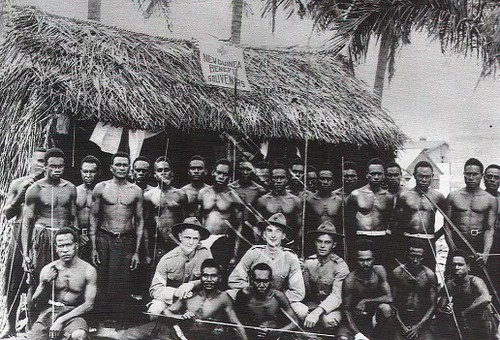Guam’s Role in World War I
First shot fired over the bow of the Cormoran
In 1917 the United States declared war on Germany, and just by chance, a German cruiser, the SMS Cormoran II, was docked at Apra Harbor.
SMS Cormoran II had pulled into Apra Harbor in August 1914 with only 50 tons of coal remaining in her bunkers. Governor William Maxwell refused to supply the German ship with much more fuel due to strained diplomatic relations between the US and Germany and the limited amount of coal stored at Guam. Thus, the ship was forced into internment in Guam.
The first “shot” of World War I actually took place off Guam shores. When President Woodrow Wilson declared war, the small Naval force in Guam attempted to seize the German vessel, but the Cormoran’s skipper, Captain Adalbert Zuckschwerdt, refused to surrender the ship, maintaining that he and his crew of more than 350, including several Chinese and Papua New Guineans, were willing to surrender, but would not surrender the ship.
The Navy took note of the German crew preparing to sink the ship and fired a shot over the bow of Cormoran, which is often cited as the first shot fired by the US military in World War I. Seven crew members died from the explosion; their bodies were later recovered and buried at the Agana Naval cemetery in Old San Antonio (now East Hagåtña).
Remnants of the Cormoran can still be found at the bottom of Apra Harbor and divers visit it regularly. The Cormoran’s bell was recovered and is exhibited today at the US Naval Academy Museum at Annapolis, Maryland.
The remainder of the German crew was sent to Fort Douglas, Utah and others were transferred to Fort McPherson, Georgia for the duration of the war. They were finally returned home to Germany in 1919.
Chamorros want to help in war effort
Shortly after President Wilson declared war against the Kaiser, hundreds of local men volunteered to fight the Germans, and some $75,000 worth of war bonds were purchased by local citizens, a sum that was appreciable at that time. Governor Roy C. Smith expressed his appreciation to the local volunteers but said there was no need to send troops to Europe from Guam.
For further reading
Rogers, Robert. Destiny’s Landfall: A History of Guam. Honolulu: University of Hawai`i Press, 1995.
Ward, Herbert T. The Flight of the Cormoran. New York: Vantage Press, 1970.




